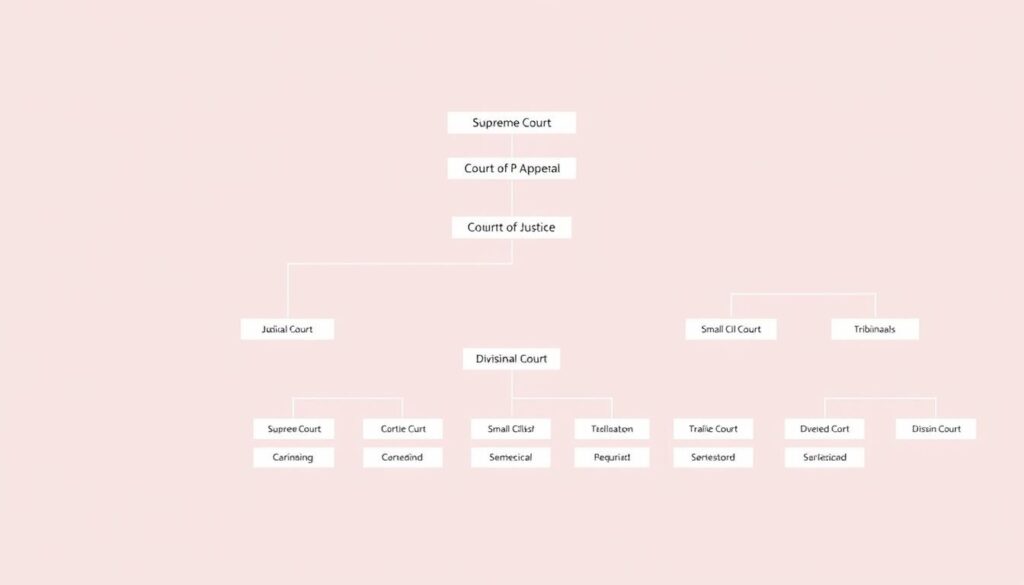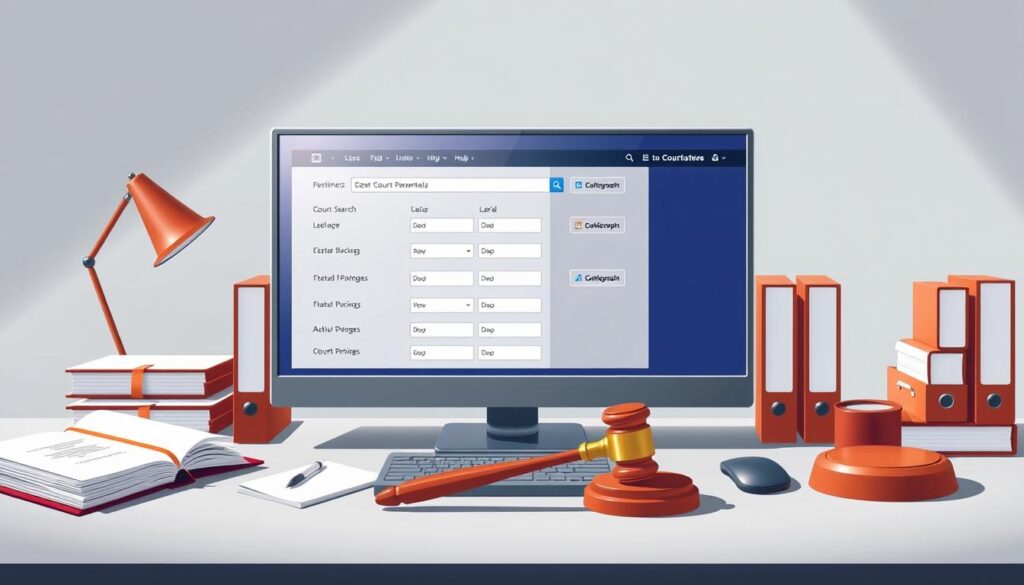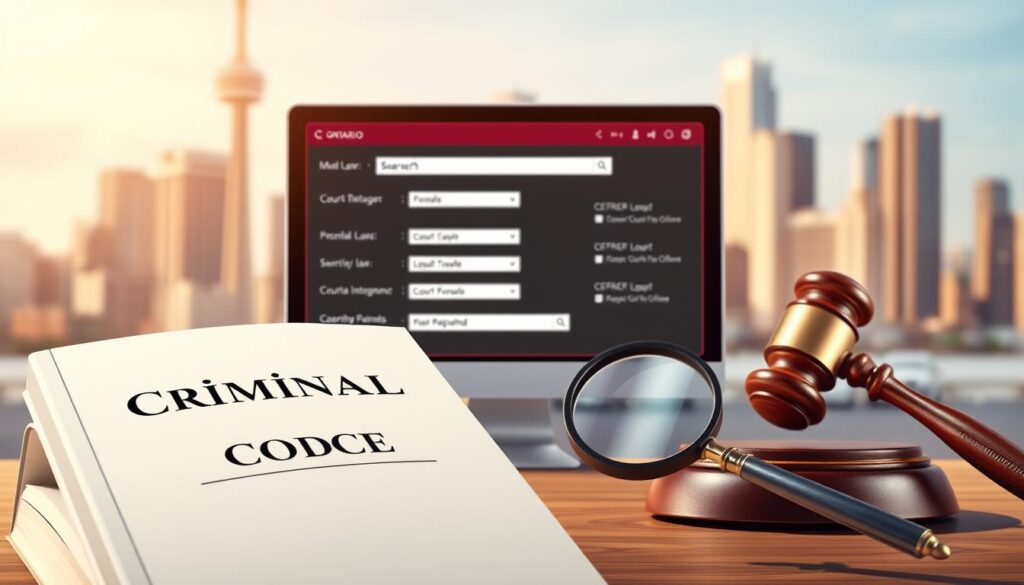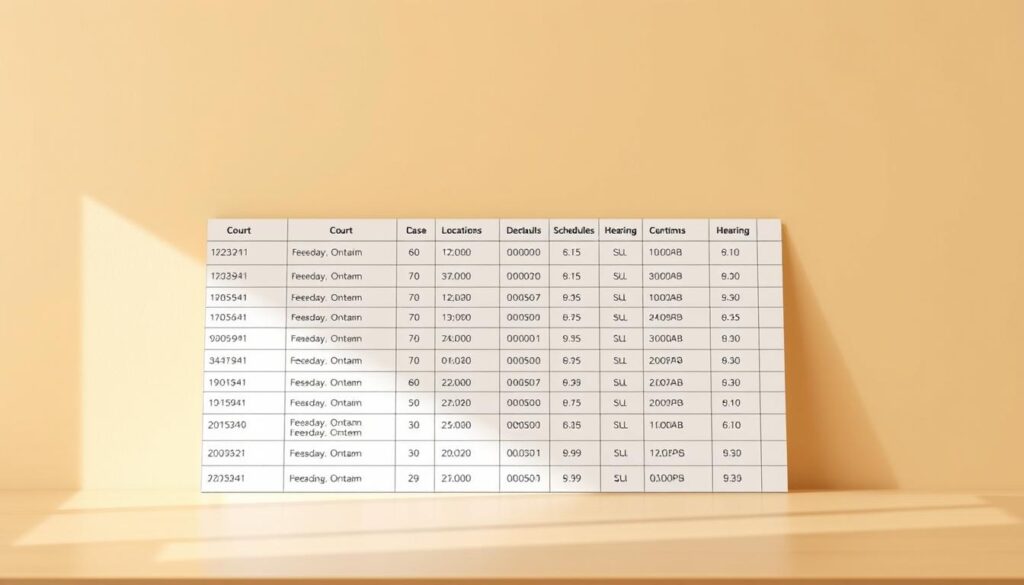Over 1.2 million legal proceedings occur annually in Ontario’s justice system, yet fewer than 30% of residents know how to access this critical public information. Understanding provincial records helps you stay informed about legal matters affecting communities and families.
Ontario’s centralized platform lets you search active proceedings using multiple criteria. Whether you need file numbers, hearing dates, or location details, the system simplifies finding specifics. It covers both Superior Court of Justice and Ontario Court of Justice records, ensuring comprehensive coverage.
You’ll discover real-time updates on scheduled events and publication bans. Built-in safeguards protect sensitive details while maintaining transparency. This balance ensures compliance with privacy laws without compromising accessibility.
Effective use requires knowing what data exists and how to filter results. For example, inputting exact file numbers yields precise matches, while broader queries might need refining. The tool prohibits unauthorized distribution of records, emphasizing responsible usage.
Learning these features saves time whether you’re handling legal research or personal inquiries. With practice, you’ll navigate Ontario’s legal databases confidently, turning complex data into actionable insights.
Understanding Ontario Court Records
Navigating legal records requires grasping how justice administration works in the province. Ontario’s framework uses two main branches to manage proceedings efficiently. Knowing this structure helps you pinpoint where specific details reside and why accuracy matters.

Overview of the Court System
The Superior Court of Justice handles serious matters like indictable offences, often involving jury trials. Less severe issues, such as summary convictions, go through the Ontario Court of Justice. This split ensures appropriate resource allocation based on case complexity.
For example, assault charges might start in one branch before moving to another. Identifying which level processed your matter determines where to search. File numbers and hearing dates differ between the two systems, affecting how you retrieve data.
The Importance of Accurate Information
Precision in legal documentation impacts everything from personal background checks to professional decisions. A single error in case numbers or dates could lead to incorrect assumptions about outcomes.
Terms like “information sworn” (used in lower courts) or “committed to trial” (superior courts) signal distinct phases. Matching these phrases to the right database avoids wasted time. Verified records also ensure compliance with privacy law when sharing details.
Reliable information strengthens your ability to make informed choices. Whether verifying someone’s history or preparing for a hearing, correct data forms the foundation of credible research.
How the criminal court case lookup ontario Tool Works
Finding legal records in Ontario’s system starts with understanding its flexible search features. You’ll need a My Ontario Account to begin, ensuring secure handling of sensitive data. Sessions automatically close after 20 inactive minutes, protecting privacy while encouraging focused research.

Search Parameters and Criteria
The tool accepts multiple inputs to accommodate varying knowledge levels. For example:
| Search Type | Details Required | Best For |
|---|---|---|
| Name-Based | Full or partial names | Locating individuals/businesses |
| File Number | Superior Court identifier | Precise record retrieval |
| Location | Courthouse address | Tracking local proceedings |
Year of birth filters apply specifically to Ontario Court of Justice criminal queries. This helps distinguish between similar names while respecting privacy boundaries.
Accessing Information by Case Number or Name
Even without complete details, partial identifiers can yield results. Entering a file number delivers instant matches, while name searches may require refining with location or date ranges. Business-related matters appear alongside individual records when names overlap.
“Effective searches balance specificity with adaptability – start broad, then narrow using secondary filters.”
Remember: Your account credentials ensure uninterrupted access. Bookmark frequently used features to save time during future sessions.
Navigating Criminal and Civil Case Searches
How do you efficiently track legal matters in progress across Ontario? The province’s search tool prioritizes active proceedings, offering real-time updates while respecting privacy protections. This approach balances transparency with legal safeguards for all parties involved.

Types of Cases Covered by the Tool
You’ll find details for matters with scheduled hearings, recent activity, or outstanding warrants. The system focuses on:
- Upcoming events (future court dates)
- Proceedings updated within the past week
- Active bench warrants issued since 2019
This scope ensures you access only current data relevant to ongoing legal processes. Civil disputes appear alongside criminal cases, though display formats differ based on court levels.
Search Limitations and Publication Bans
Some records remain hidden due to publication bans or legal protections. Youth-related matters never appear publicly, while adult proceedings might have temporary access blocks. The tool alerts you when restrictions apply but may not show bans ordered within the last 48 hours.
Provincial offence tickets (like traffic violations) require separate municipal searches. If results seem incomplete, contact local court offices for clarification. Understanding these boundaries helps streamline your research process.
Exploring Daily Court Lists and Court Locations
Accessing up-to-date schedules helps you prepare for legal engagements efficiently. Ontario’s digital tools provide real-time details about hearings and facility operations, streamlining your planning process.

Daily Court Lists for Criminal Proceedings
The daily court lists show case names, start times, and room numbers for scheduled appearances. You’ll also see the purpose of each hearing – from arraignments to sentencing. These lists update every weekday morning, reflecting last-minute changes from the previous evening.
| Included in Lists | Excluded from Lists |
|---|---|
| Public criminal hearings | Written submissions |
| Family law matters | Youth justice cases |
| Room assignments | Weekend hearings |
Special sittings during holidays won’t appear online. For these, contact court staff directly using the location tool’s contact details.
Using the Courthouse Location and Information Tool
Find facilities by address or region through the province’s interactive map. Each entry shows:
- Operating hours
- Parking instructions
- Accessibility features
“Always verify hearing details 24 hours before your scheduled appearance – room assignments sometimes change.”
Understanding Service Hours and Contacts
Most courthouses operate weekdays from 8:30 AM to 4:30 PM. Phone support typically starts 30 minutes later. Use the tool’s filter options to:
- Identify bilingual services
- Locate document filing stations
- Find after-hours drop boxes
Remember: Staff can’t discuss case specifics by email due to privacy laws. Visit in person for detailed inquiries.
Additional Tips for Accessing Court Information

Efficiently navigating legal systems requires combining digital tools with human expertise. Start by organizing every detail you recall about the matter – even partial information helps narrow results.
Preparing Your Search with the Right Details
Gather approximate dates, full names, and locations related to proceedings. Multiple identifiers help distinguish between similar entries, especially for common surnames. For example, knowing a court date range reduces irrelevant matches by 60% compared to name-only searches.
Create a checklist of potential search terms like “order issued” or specific offences. This approach saves time when filtering through extensive databases. Older matters may require cross-referencing physical archives – staff can guide you through this process.
Contacting Legal Offices for Further Assistance
When digital searches fall short, direct communication resolves most challenges. Staff members clarify publication bans, explain access restrictions, and confirm hearing details. Always reference the specific case heard when asking questions to streamline responses.
“The more context you provide, the faster staff can locate your file.”
Use the province’s location tool to find email addresses and phone numbers. Prepare concise inquiries like “Can you confirm the next court appearance date for file XYZ?” This specificity helps teams prioritize your request.
Conclusion
Understanding how to find legal records empowers informed decisions in Ontario’s justice framework. The province’s search tools connect you with active proceedings across both the Superior Court of Justice and Ontario Court of Justice. Whether using file numbers, names, or hearing dates, these systems prioritize clarity while respecting privacy boundaries.
Daily updated court lists and location services help track scheduled events efficiently. Remember: publication bans and youth-related protections limit some data visibility. When digital searches fall short, legal offices provide guidance on alternative access methods.
Success hinges on preparation. Gather precise details like dates or locations before searching. This approach reduces errors and saves time. Staff assistance becomes crucial for clarifying restrictions or historical records not available online.
Ontario’s legal services balance transparency with responsibility. By mastering these tools, you transform complex data into practical knowledge – essential for personal inquiries or professional research.

